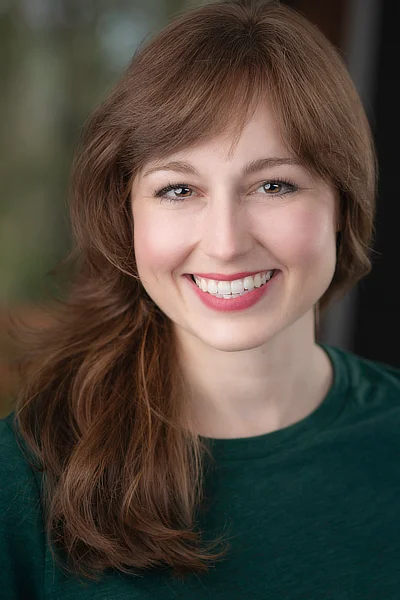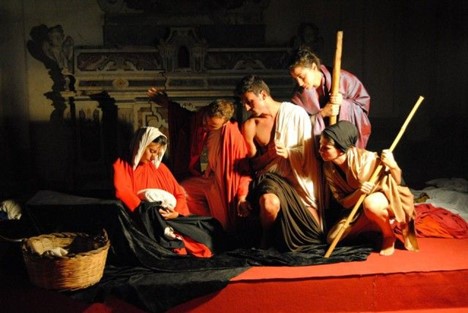
There are so many different styles of worship in the church ranging from traditional to contemporary with so many facets of each and in between. One reason to feel passionate about having a wide array of worship styles is that we are all fearfully and wonderfully made (Psalm 139:14), each unique creations; it stands to reason that this would necessitate different forms of worship to speak to different souls and minds. Something I think that is often overlooked in the Church, however, is that there are methods of reaching the soul through the arts outside of music. Biblical tableaux is one such method that may be a helpful way for your worship service to illuminate scripture, especially for congregants who are visual processors. Biblical tableaux is the art of using actors to form frozen pictures to depict scripture that is being read aloud by a reader. It has been used by the Church since medieval times. Below is a step by step “how to” I hope you will find helpful.
Step 1:
Pray and Study. Once your scripture has been selected or assigned, pray over this scripture, and use commentaries and concordances of your choice to really get to know your passage. Think the passages surrounding yours, authorship, life application, literary genre, and historical context. I always pray for the Lord to bring certain, specific images to mind as I read and study.
Step 2:
Analyze. I always type out my passage on a document and put spaces between verses so I can visualize and work with a copy of the passage. I take a sheet of paper and brainstorm images that come to mind. Sometimes these are literal images and sometimes they’re more abstract ideas or thoughts. I don’t hold my brain back and let it spew forth on the page. Now is the time to be creative, not to self-edit. Another great tip is to listen to an audio reading of the passage; this always brings up different images than when I read!
Another technique I use is to take different colored pens to annotate the text. I underline action verbs, circle nouns, and draw a squiggle under adjectives. This helps me to find the operative (important, activated) words in the text.
Step 3:
Break it down. Take some time to figure out the following specific aspects of your passage:
Who: Which characters are in this passage? They don’t have to be human! A Psalm about the qualities of God’s love leaves the characters up to interpretation. One actor could represent love, one could represent the Father, and one could represent humankind. Get creative while remaining consistent with what is in the text.
What: Think about the passage as a whole and break it down into sections. Where do transitions happen? Draw a slash between these verses. This can help you determine how many tableaux you will end up with. This may change later on in your process, but you can start to get a feel for thinking about how the passage flows and how the text shifts and changes. Really think about taking your brainstorming list and start to attach images to each section.
How: Think about how the scripture is applicable to our daily lives, and what major objective you wish for the audience to take away. Always come back to the how at every step of your process.
Step 4:
Create. Now, let’s get on our feet! This is when I take all this paperwork and analyzing and imagination we have done, and mold it into individual pictures. I like to try to create for my actors three strong options for each section of the passage. If I’m working on my own, I will video or photograph myself doing the pictures to see what they look like, and which of the three images makes the strongest image for the section. Look for levels and variety in your stage pictures. I then narrow down into one strong image for each passage. Depending on the passage, these may be literal images that depict the story, or abstract gestures that depict ideas.
Step 5:
Set. We want to practice with our actors and our reader to set our tableaux before presenting it to a congregation. Set specific words or phrases from the passage as cue words for your actors to transition from tableaux to tableaux. An alternative to this would be having your reader pausing between sections so that the actors are set before continuing to read. Either way, practice fluidity and specificity as to getting each actor seamlessly from one picture to the next.
Have all actors wear the same color clothing so focus is on the storytelling, or put each actor in a different color if you’d like to accentuate who they are playing or what they represent.
You may find using props may help or distract from your piece- that will depend on the passage- but it is an option!
Bonus:
Musical underscoring, if available to you, can take this whole artform to a new level, whether using prerecorded music, or collaborating with your music team. Find a hymn or instrumental piece that resonates with the passage and see where it takes you!
Interested in learning more? Check-out Freeze Frame: Dramatic Scripture Telling Using Tableaux by Tom S. Long
Chelsea Reynolds Nicholson is a SAG-AFTRA actor and theatre educator who hails from Gulf Breeze, FL. Her areas of focus in the department are Musical Theatre and acting. She holds an M.F.A. In Acting from the University of Alabama, and a B.A. in Musical Theatre from Samford University. While maintaining a professional acting career, she has taught a variety of musical theatre and theatre courses for the University of Montevallo and Samford University, and is beyond ecstatic to be joining the faculty of Samford University full time. She has worked with esteemed AEA houses around the country such as Flat Rock Playhouse, Hangar Theatre, and Greenbrier Valley Theatre. A few of her favorite acting credits include May in “Fool for Love” with the Hollywood Fringe Festival, Lily in the Alabama premiere of “Alabama Story” with Red Mountain Theatre Company, Missy in “The Marvelous Wonderettes” with Actors Point Theatre Company of Nashville, and a silent horror film directed by Jim Hanks.

